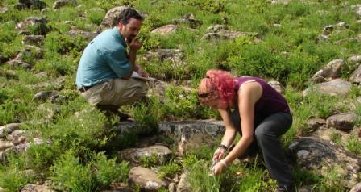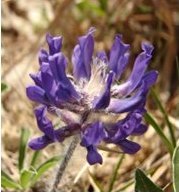Conservation Biologist, MBG
Research Interests
• Conservation Biology
• Fire Ecology
• Restoration Ecology
• Demography and population ecology of rare plants
• Ex situ conservation and autecology of endangered species in the Midwest.
Web Page: MBG, Species Conservation
1.) Predicting the effects of climate change on Midwest Plant Species. We are currently working on a large-scale climate change project that aims to understand which Midwestern plant species are vulnerable to climate change using computer models and field and growth chamber experiments. In this project, students will learn the nature and properties of plant life-history data, such as dispersal mode, growth form, life-cycle, climate regime, habitat specificity, biotic interactions, genetic variation, and phenology, and why these data are important for evaluating the effect of climate change on the extinction risk of plant species. Students will gain experience conducting keyword searches in scientific search engines (e.g., Scopus) and in NatureServe Explorer (http://www.natureserve.org/explorer/) to gather plant life-history data. NatureServe Explorer is the most comprehensive database for information on US plant species and an invaluable tool for scientists working on US plant conservation. Students will organize the plant life-history data into a Microsoft Excel database which will be used to calculate a Climate Change Vulnerability Index (CCVI). Developed and used widely by North America’s leading conservation organization (The Nature Conservancy), the CCVI uses distribution and natural history information for a species within a specific geographical area to rapidly estimate its relative extinction risk to future climate change. Students will work with scientists to calculate the CCVI using the life-history data they gathered.
2.) How Will Edaphic Endemics Respond to Climate Change? A major challenge for conservation biologists is predicting the fates of species in a rapidly changing climate of the 21st century. In the Midwestern United States, rock outcrops support a distinctive flora that includes many rare endemic plants, many of which are of conservation concern due to restricted distributions. Understanding the future fates of rare edaphic endemics are especially challenging because it’s unclear whether current distributions are limited by the specialized soils of outcrops, by climate, or by a combination of climate and soil. In this study, we ask two questions: 1) Can edaphic endemics live outside of their current climate niche? What is the relative importance of soil and climate in restricting the distribution of edaphic endemics? To answer these questions, we will establish transplant experiments within and outside the geographic ranges of several species in the genus Leavenworthia, which are winter annuals endemic to limestone outcrops in the lower Midwestern US. We also plan to subject species of Leavenworthia to germination experiments where growth chamber conditions are set to future climate scenarios. Opportunities will be available for the student to conduct field work in the Ozark Mountains, Ouachita Mountains, and the Tennessee Central Basin. The student will assist scientists with processing seed samples collected in the field, setting up seed transplant experiments in growth chambers and at field sites, and recording demographic data (germination, survival, flowering, and fruiting). Students can participate in the analysis and preparation of manuscripts based on the experimental data.
Selected Publications
• Albrecht, M.A. and J.C. Penagos Z. 2012. Seed germination ecology of three imperiled plants of rock outcrops in the southeastern United States. Journal of the Torrey Botanical Society 139: 85-94.
• Albrecht, M.A. and J.M. Maschinsky. In press. Influence of founder population size, propagule stages, and life history on the survival of reintroduced plant populations. Reintroduction in a changing climate Promise and, Perils. J. Maschinski and K. E. Haskins (editors). Island Press, Washington, DC.
• Albrecht, M.A., E.O Guerrant Jr., J.M. Maschinsky and K.L. Kennedy. 2011. Editorial: A long-term view of rare plant reintroduction. Biological Conservation 144: 2557-2558.
• Albrecht, M.A. and B.C. McCarthy. 2011. Variation in seed dormancy and germination in three co-occurring forest herbs of eastern deciduous forests. Plant Ecology 212: 1465-1477.
• Albrecht, M.A. and K.A. McCue. 2010. Changes in demographic processes over long time scales reveal the challenges of restoring an endangered plant. Restoration Ecology 18: 235-243.
• Albrecht, M.A. and B.C. McCarthy. 2009. Seedling recruitment limitation shapes the distribution of shade-adapted forest herbs across a topographic moisture gradient. Journal of Ecology 97: 1037-1049.
 |
 |